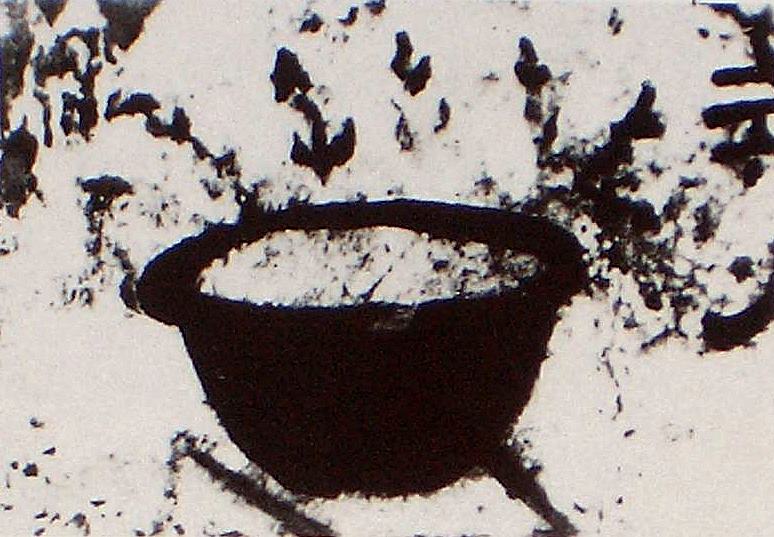
|
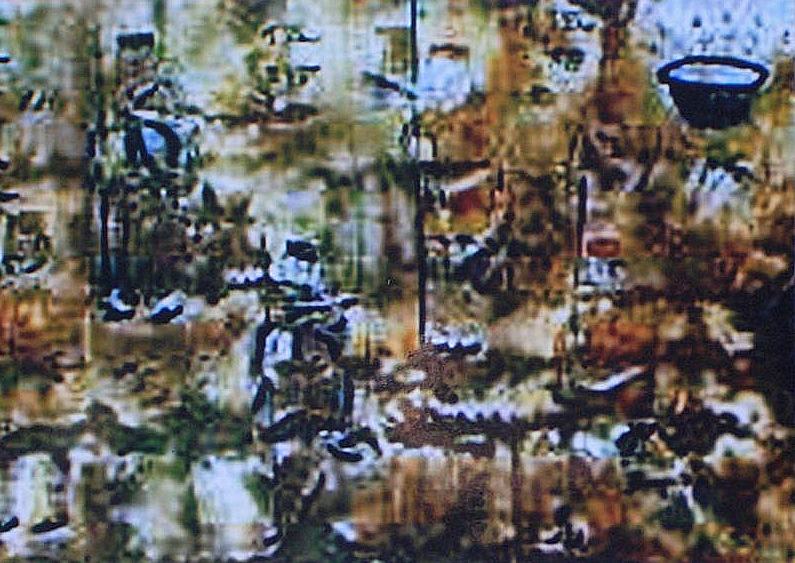
|
|
|
|
CHINA -- INCOMPLETE IDENTIFICATIONS
This Page Last Updated January 3, 2011
| The following are graphic images which have not been identified enough to warrant inclusion with the other portrayals. Due to the special nature of these subjects, for educational purposes we have included here the entire image as known to us. (Once identified, only the dwarf potted tree portion will be used.) Whatever description that has been received from the source and/or has been determined by RJB based on other portrayals is given here. We need your assistance in further placing these and determining their makers. Also let us know if you have additional details about the other portrayals -- not all of them are totally identified either. Send as many details as possible to rjb@magiminiland.org . |

|

|
|
|
|
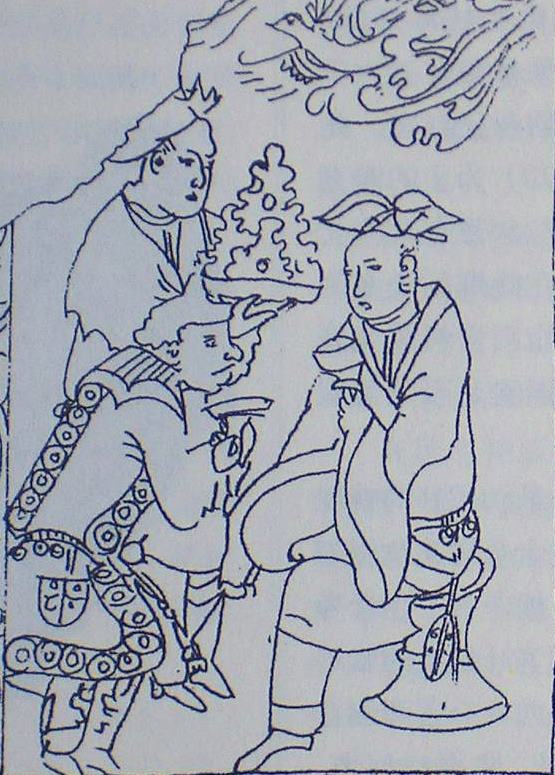
|
|
the mountain stone bonsai was traded with Roman merchants per this Qingzhou carved stone grave portrait in Shandong province" (2) |
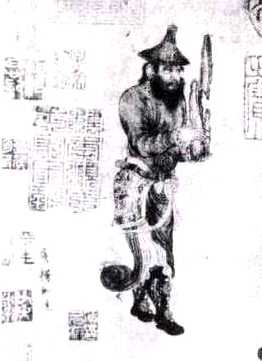
|
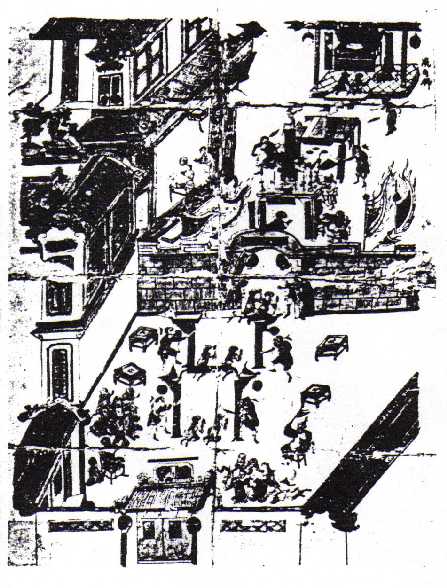
|
|
(Lu Leng-chia, fl.730-760) A foreigner bearing a stone. 8th cent. (3) |
"Secret Societies. Stages in the initiation for Triad Society members." (4)
|
|
|
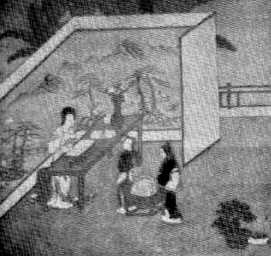
|
|
|
|
|
|
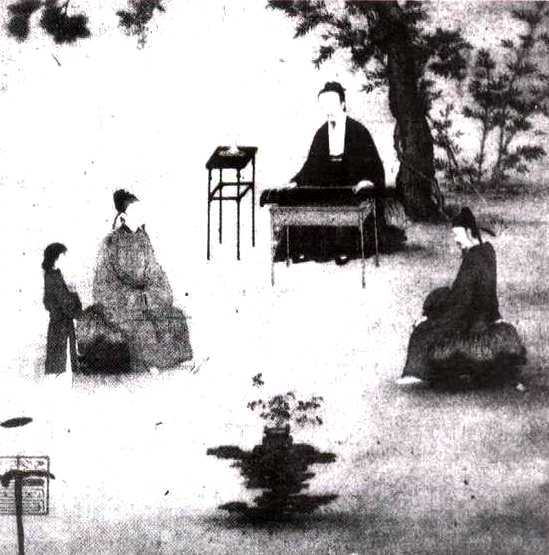
|
|
|
|
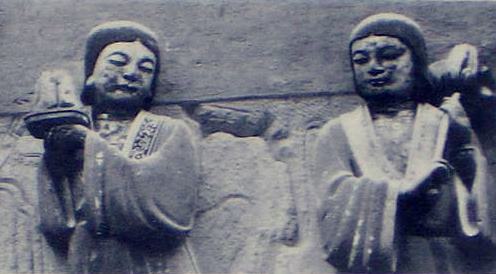
|
|
a maidservant on the left holds the mountain stone bonsai" (8) |
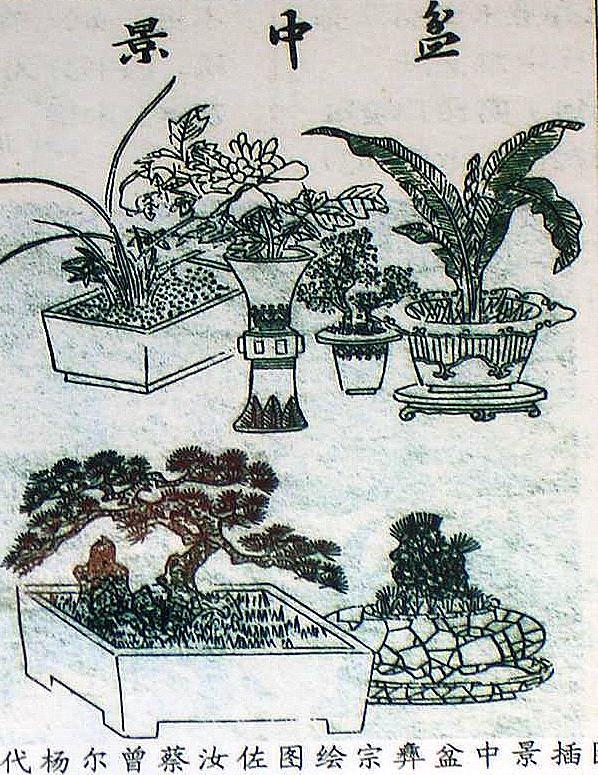
|
|
|
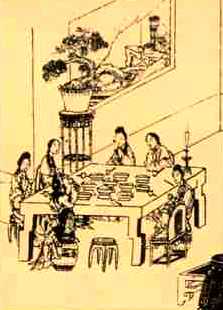
|
|
|
|
|
|
|
|
|
|
|
|
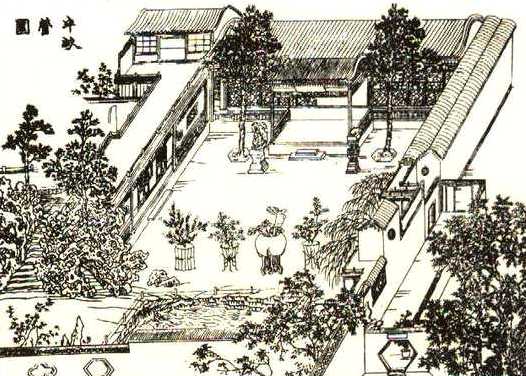
|
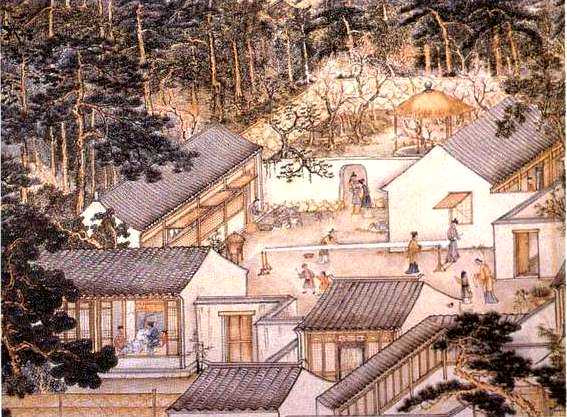
|
|
|
|
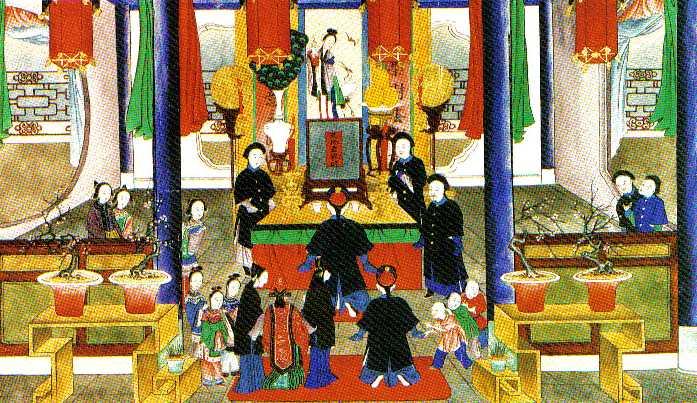
|
|
Wedding ceremony in the late 1800s. (14)
|
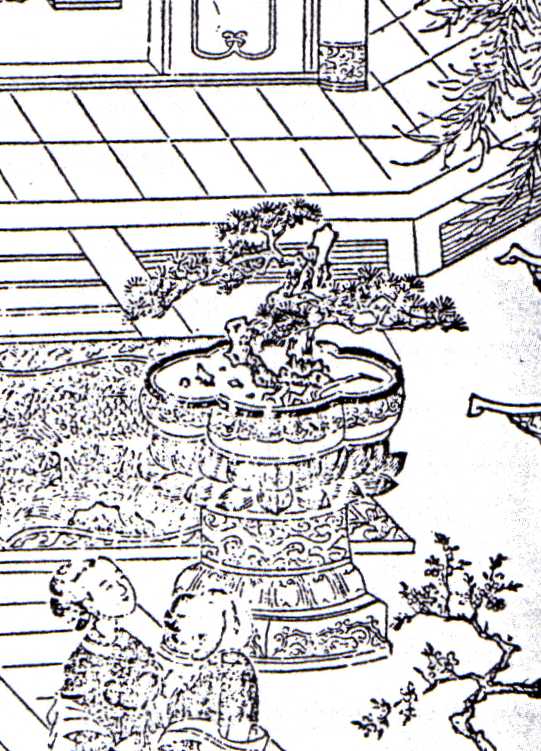
|
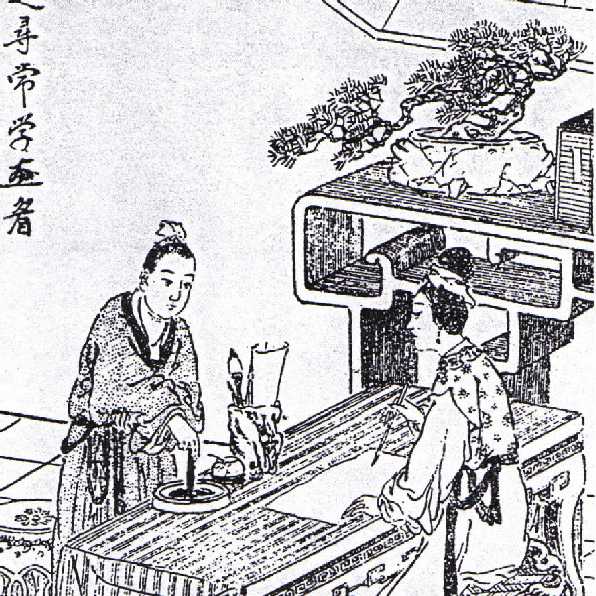
|
|
Ming dynasty (15)
|
Qing dynasty (15)
|
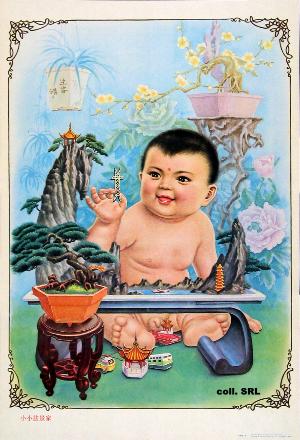
|
|
Propaganda poster from the 1990s. (16)
|
|
1. Wei Jinsheng, "Brief History of Penjing," 12-25-2009, World Bonsai Friendship Federation, http://www.wbff-2013.org/indexaction!pbviewbyid.action?pbcId=141, Fig. 2, accessed 07/24/2010, with mechanical translation from Babelfish and Dictionary.com on 07/25/2010. 2. Wei Jinsheng, Fig. 3. 3. Personal e-mail to RJB from Tomas Melo of Slovakia, October 3, 2001. From The art of chinese gardening by Zdenek Hrdlicka. Compare with Yen Liben, mid-7th century.
4.
Fairbank, John K., Edwin O. Reischauer and Albert M. Craig
East Asia, Tradition & Transformation
(Boston: Houghton Mifflin Company; 1989), pg. 468. At least two trees in upper left corner.
5. Wu, Yee-sun Man Lung Artistic Pot Plants (Hong Kong: Wing Lung Bank Limited, 1974, Second edition), pg.31. Both images are poor quality in the book. 6. Wu, Yee-sun, pg. 39. "Picture shows dwarf trees being brought in by land and river from various places to be put on display. From this we know that exhibitions of dwarfed trees were already popular in ancient China as early as during the Sung and the Ming Dynasties." Over a dozen medium-sized pots in light colors, with one blue container and one orange-brick colored pot among them, are on stands which circle the edge of a small clearing between a moon-windowed building and the water. About a dozen people are viewing the trees in the clearing. A boatman approaches from the lower right with at least one more flowering medium dwarf plant in his long flat boat. Is there a significance to the circular display or even to the number of trees shown? Another copy, slightly cropped, can be found in The art of chinese gardening by Zdenek Hrdlicka, per personal e-mail to RJB from Tomas Melo, October 3, 2001; per personal e-mail from Christy Kim in Honoloulu, HI to RJB, May 29, 2002, the work is Sung: "...the main thing that differs from Sung to Ming is the size of people and houses in relation to nature. Sung has much smaller proportions." 7. Personal e-mail to RJB from Tomas Melo, October 3, 2001. From The art of chinese gardening by Zdenek Hrdlicka. 8. Wei Jinsheng, Fig. 10. 9. Wei Jinsheng, Fig. 18. 10. Personal e-mail to RJB from Tomas Melo, March 27, 2001. Picture "found in library." 11. Lesniewicz, Paul The World of Bonsai (New York: Sterling Publishing Company, Inc. 1990), end pages. 12. Personal e-mail to RJB from Tomas Melo, July 11, 2001.
13. Personal e-mail to RJB from Tomas Melo,
October 3, 2001. From
The art of chinese gardening
by Zdenek Hrdlicka. Per "wolfgang mozart" in personal e-mail to RJB, March
16, 2003, this can be found in the book "Osvald Siren's Gardens of China,"
originally published around 1939 (but possibly it may have been reprinted).
RJB is checking this out. Per Titley, Norah and Frances Wood
Oriental Gardens, An Illustrated History
(San Francisco: Chronicle Books; 1991), pg. 87, Garden Pan-mou jüan (above) is also shown as Fig. "
71 The famous 'Half Acre' garden, laid out in the early 17th century and
later inhabited by the Qing official, Linqing, illustrating many traditional features of the Chinese garden:
ornamental openings in walls, trees, mock mountain rockery, a pool, potted plants and a garden
pavilion. From Hong xue yin yuan, the illustrated autobiography of Linqing.
" Linqing (1791-1846), aka Lin-ch`ing, Zhenxiang, Boyu, Jianting, Lin Ch`ing, Chen-hsiang, and Po-yü, per
http://www-catalog.cpl.org/MARION/BDY-9348.
14.
Steele, Philip
Step Into The... Chinese Empire
(London: Anness Publishing; 1998), pg. 22.
15.
Lin, Kuo-cheng
Miniature Bonsai, A Complete Guide to Cultivating Tiny Bonsai
(Taipei: Hilit Publishing Co., Ltd.; 1987), pg. 30. The Qing
woodblock print might be by Wu Yu-ji because of similarity of stand
design.
16.
New Year Prints (and chubby babies),
Stefan Landsberger's Poster Pages,
"In the Reform era in particular, traditional visual elements were tolerated more than in earlier periods.
In the process, the genre proved itself to be extremely adaptable to the changing circumstances. Around the 1990s,
as disposable incomes rose and material wealth became affordable for increasing numbers of people, traditional baby
images, but with cameras around their necks, or watches on their wrists, became the norm. But modernity creeped in
in other ways too: the 'young bonsai specialist' above puts various elements of modernity and development in a
traditional miniature landscape." |